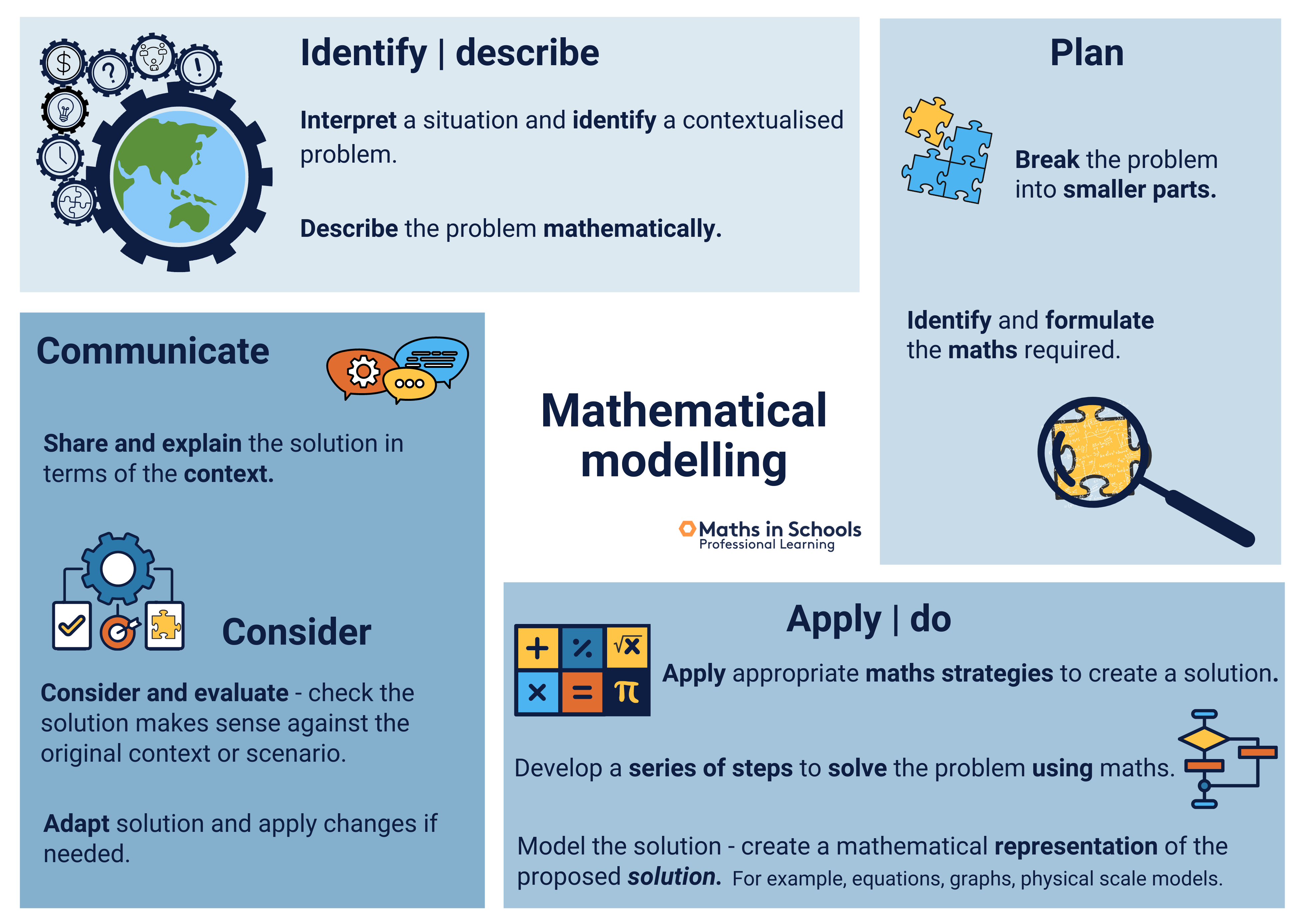Computational thinking
See also: computing, integrated-computing, teaching-digital-technologies
This identifies computational literacy as "an essential literacy" with four pillars
- decomposition: breaking the problem into multiple parts
- pattern-recognition: looking for similarities and trends
- abstraction: putting aside what is unnecessary and focusing on what’s important
- algorithm-design: creating a computer artifact with step-by-step instructions to solve a problem
Wing (2006) defines computational thinking as
solving problems, designing systems, and understanding human behaviour, by drawing on the concepts fundamental to computer science (p. 33)
Resources#
CSER Maths in Schools#
CSER maths-in-schools MOOC offers the following figure. With computational thinking being included in both the mathematics and digital technologies learning areas.

(self-)Assessment of computational thinking#
Articles - article on dev of BCTt - article for uppper primary - another - initiative CTA
Tests - BBC quite simplisitc
programming self-efficacy - ACM 2020 article - ICT self efficacy
References#
Wing, J. M. (2006). Computational thinking. Communications of the ACM, 49(3), 33--35.